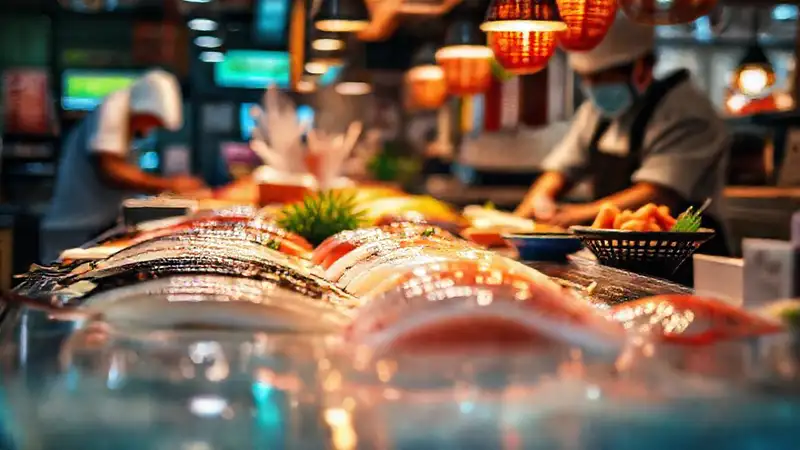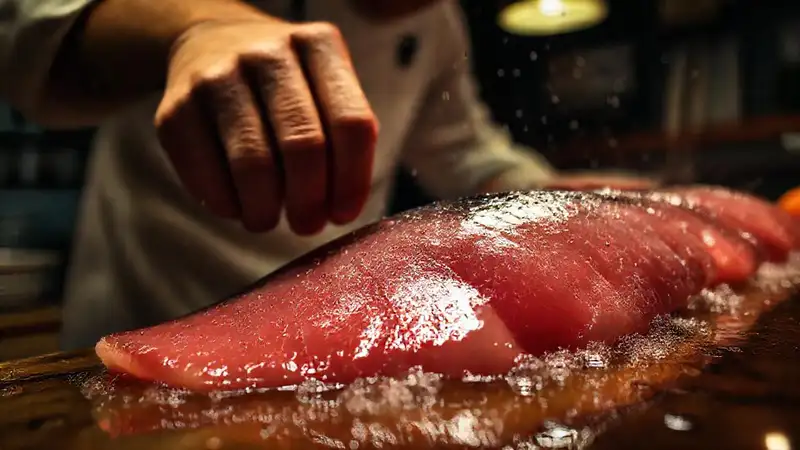Sushi, a cornerstone of Japanese cuisine, has evolved dramatically over centuries, developing diverse regional variations. While often perceived as a monolithic concept, the reality is far more nuanced. Each region in Japan boasts its own distinct approach to ingredient sourcing, preparation techniques, and presentation, resulting in dramatically different sushi experiences. Understanding these regional distinctions is key to appreciating the full breadth and artistry of this beloved dish. This article will explore three prominent sushi styles: Hokkaido, Kansai, and Tokyo, delving into what makes each one unique and how they’ve shaped the overall landscape of sushi.
The influence of history, geography, and local traditions plays a significant role in these variations. Access to ingredients, prevailing culinary philosophies, and even the climate impact the final product. From the icy waters of Hokkaido to the bustling markets of Kansai, sushi reflects the specific character of each area. Ultimately, these regional differences aren’t simply stylistic choices; they represent a rich and vibrant culinary heritage that continues to evolve and inspire.
Hokkaido Sushi: The King of Freshness
Abundant Seafood
Hokkaido sushi is arguably the most famous for its exceptional seafood quality. Located in the far north of Japan, Hokkaido enjoys a relatively short fishing season due to the harsh winters, creating a highly valued and intense demand for fresh catches. This urgency drives the region’s sushi chefs to seek out the very best ingredients – prized uni (sea urchin), salmon, crab, and various types of shellfish are staples. The focus is relentlessly on maximizing the natural flavor of the fish, often with minimal seasoning.
Nui-Sushi Style (Endama Sushi)
A distinctive feature of Hokkaido sushi is the nui-sushi, also known as endama sushi. These are small, round nigiri (slices of fish over rice) tightly wrapped in a piece of nori seaweed. The seaweed isn't simply decorative; it helps to seal in moisture and intensify the flavor of the fish, particularly as it’s frequently served very fresh and requires no sauce. The tight wrapping also makes them exceptionally easy to eat on the go – a perfect fit for a culture accustomed to enjoying quick meals.
Wasabi as a Key Element
Instead of relying heavily on soy sauce, Hokkaido sushi prioritizes the natural flavors of the seafood. However, wasabi plays a far more significant role than in other styles. It’s liberally applied, not just as a condiment, but also incorporated directly into the rice itself, creating a subtly spicy and intense base for the sushi. This balances the richness of the fish and adds another layer of complexity to the flavor profile.
Kansai Sushi: The Refined Approach

The Influence of Kyoto
Kansai, encompassing Osaka, Kyoto, and Kobe, is where many of Japan's culinary traditions were solidified. Kansai sushi reflects this historical importance, focusing on a more refined and elegant presentation. There’s a stronger emphasis on aesthetically pleasing arrangements and the use of intricate techniques. Kyoto’s influence is particularly apparent in the focus on seasonal ingredients and a restrained approach to seasoning.
Akami and Tuna Variations
Compared to Hokkaido, Kansai sushi features a wider variety of tuna preparations. Akami (lean tuna) is frequently used, often sliced thinly and layered with careful attention to the grain. However, Kansai is also known for its meticulous handling of otoro (fatty tuna), achieving a beautiful marbling and delicately balanced flavor. The focus is on showcasing the quality of the tuna, letting its natural characteristics shine through.
The rice, or shari, is just as important in Kansai sushi as the fish. It's often seasoned with a balanced mixture of rice vinegar, sugar, and salt, aiming for a subtle sweetness and acidity that complements the seafood. The rice is carefully molded and shaped, demonstrating a dedication to precision and symmetry – a hallmark of the Kansai aesthetic.
Tokyo Sushi: The Standard Bearer
A Legacy of Tradition
Tokyo sushi, particularly in the Ginza district, is renowned for its adherence to traditional methods. It’s often considered the most formalized and technically rigorous of the three styles, deeply rooted in the teachings of master sushi chefs like Jiro Ono (featured in the documentary "Jiro Dreams of Sushi"). This legacy emphasizes rigorous training and unwavering dedication to quality.
Edomae Style and Aging
The edomae style, prevalent in Tokyo, involves a technique known as “aging” or “seating” the fish. This process, often done in a vacuum-sealed container, draws out moisture and concentrates the flavors, creating a deeply umami-rich and intensely flavored sushi. The aging process is considered an art form in itself, requiring specialized knowledge and skill.
Minimalist Presentation
Tokyo sushi focuses on presenting the ingredients in their purest form, with minimal ornamentation. The emphasis is entirely on the freshness and quality of the seafood, served with a simple, carefully balanced seasoning of soy sauce and wasabi. The presentation reflects a profound respect for the ingredients and a belief that less is more.
Conclusion
Ultimately, each regional sushi style—Hokkaido's emphasis on freshness, Kansai’s refined elegance, and Tokyo’s adherence to tradition—represents a distinct approach to this revered dish. There isn't a "better" style, merely different expressions reflecting the unique environment and values of each region. Studying these variations reveals the incredible depth and complexity of Japanese cuisine.
The ongoing evolution of sushi continues to be shaped by these regional influences, with chefs constantly seeking new ways to showcase the bounty of their local environments while upholding the core principles of quality and craftsmanship. Exploring these diverse styles is an invitation to appreciate the beauty and artistry of sushi on a deeper level, celebrating its rich and enduring heritage.
 What are some traditional Oaxacan drinks to pair with tlayudas
What are some traditional Oaxacan drinks to pair with tlayudas How do you pair tlayudas with different types of salsas
How do you pair tlayudas with different types of salsas How do you find high-quality mezcal for tlayuda pairing
How do you find high-quality mezcal for tlayuda pairing How does Tokyo’s sushi emphasize freshness, always
How does Tokyo’s sushi emphasize freshness, always How does Kansai’s culinary heritage shine through
How does Kansai’s culinary heritage shine through What are the traditional seasonings in Kansai sushi
What are the traditional seasonings in Kansai sushi How does Tokyo’s innovation affect sushi’s evolution
How does Tokyo’s innovation affect sushi’s evolution What makes Tokyo’s otoro sushi so prized, truly
What makes Tokyo’s otoro sushi so prized, truly
Deja una respuesta